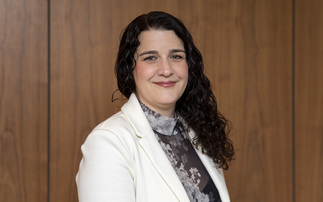Recently in the news after alarming statistics detailing its prevalence, Non-melanoma skin cancer is a public health menace. PruProtect's Fergus Bescoby explains the implications
These areas include parts of the face such as the nose, forehead and cheeks. But basal cell skin cancer can develop on your back or lower legs. It is most often diagnosed in people in middle or old age.
This type of cancer may also be called a rodent ulcer. It may start as a small lump that gets bigger. The edges usually have a shiny or pearly look with the middle usually being depressed (sunken). Sometimes the middle becomes crusty or an ulcer develops.
BCC's do not usually hurt unless knocked however they can be itchy and may bleed if scratched. If the BCC is not treated they can get bigger, wider and deeper. They can affect other types of tissue such as cartilage or even bone but rarely metastasize. Advanced rodent ulcers are very rare in the UK because most people get treatment at an early stage.
There are a number of different subtypes of basal cell skin cancers. These include
• Nodular
• Superficial
• Morphoeic
• Pigmented
Each of these subtypes can look and behave differently. About half the number of BCCs diagnosed are the nodular type.
It is very rare for basal cell skin cancer to spread to another part of the body to form a secondary cancer although it is possible to have more than one basal cell cancer at any one time. Having had one does increase the risk of getting another.
Squamous cell carcinoma (SCC)
About 20% of skin cancers diagnosed are this type. This cancer begins in cells called keratinocytes, which are found in the epidermis. Squamous cell cancer most often develops in areas that have been exposed to the sun.
These areas include parts of the head, neck, and on the back of your hands and forearms. In a small number of cases squamous cell cancer can develop around the vulva or anus.
It can also develop in scars or areas of skin that have been burnt in the past or ulcerated for a long time.
Squamous cell skin cancer can look like a crusty, scaly ulcer or it may be bumpy and hard and develop into an ulcer. SCC's are generally faster growing than basal cell cancers.
This form of cancer seldom spreads but if it does it is most often to the deeper layers of the skin. Sometimes, it can spread to nearby lymph nodes and other organs causing secondary cancers.
Less common types of non melanoma skin cancer
There are other less common types of skin cancer. Added together, these types make up only about 1% of all skin cancers diagnosed in the UK. They are:
• Merkel cell carcinoma
• Kaposi's sarcoma
• T cell lymphoma of the skin
These cancers are all treated differently from basal cell and squamous cell skin cancers.








